Slade's Morgue:
Ripper
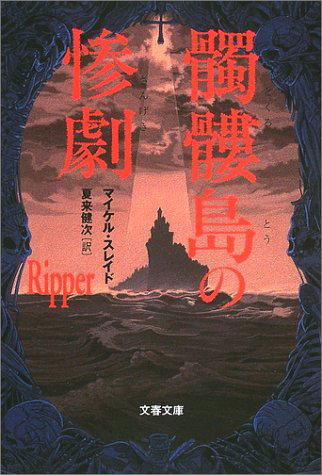
RIPPER is Michael Slade's first isolation thriller. Here's the story behind it.
In the early 1960s, when Slade entered his teens, his mom took him to London. Given his interests at the time, Slade had three must-sees. The first was Agatha Christie's THE MOUSETRAP, which was then playing at the Ambassadors Theatre. It later moved to the St. Martin's Theatre. First staged in 1952 and still going strong, THE MOUSETRAP is the world's longest running play.
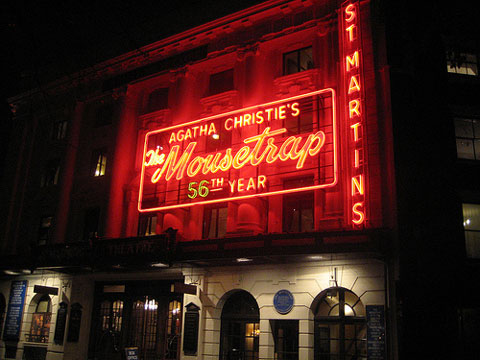
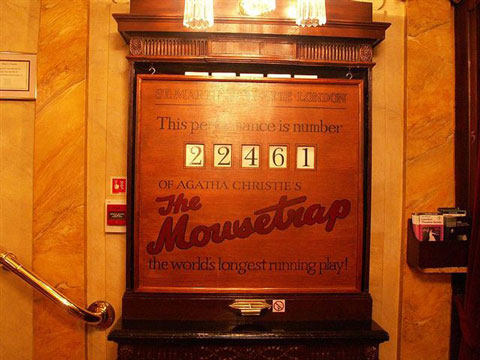
THE MOUSETRAP is a classic isolation thriller. Eight people are snowed in at Monkswell Manor when a killer strikes. It has since become a tradition for Slade to see the play whenever he's in London. The cast is ever-changing.
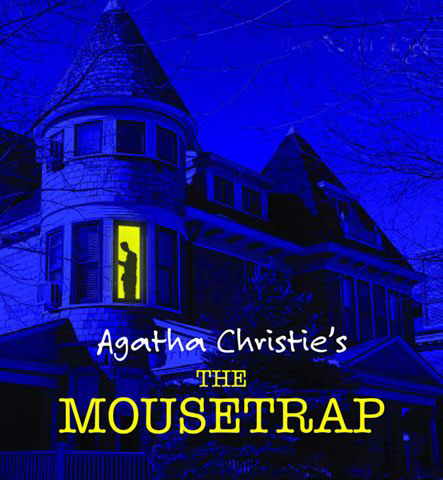
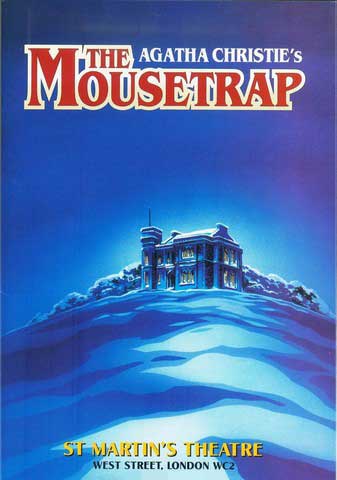
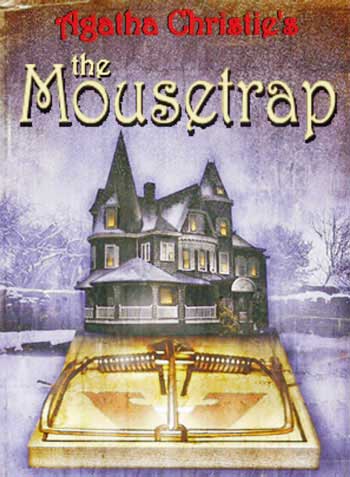
The second must-see was Jack the Ripper's murder sites. The Ripper is now a London tourist industry, and an Amazon search will find countless books by Ripperologists. Back then, however, the only book written about the Whitechapel murders for decades was this:
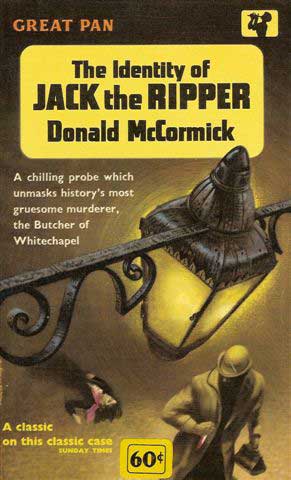
With that pictureless guide in hand, Slade went looking for the five murder sites (see GHOUL). On September 30, 1888, the Ripper knifed Catherine Eddowes to death in Mitre Square. All that remains of the square today is the cobblestones, but when young Slade was there, it looked like this:
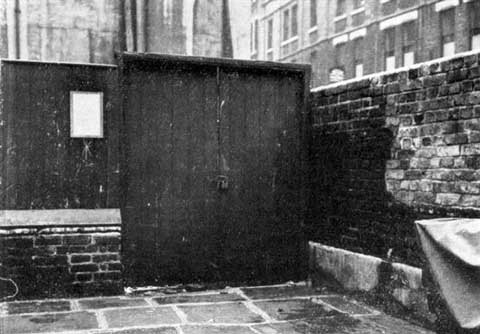
Ripper's Corner (from AUTUMN OF TERROR by Tom Cullen)
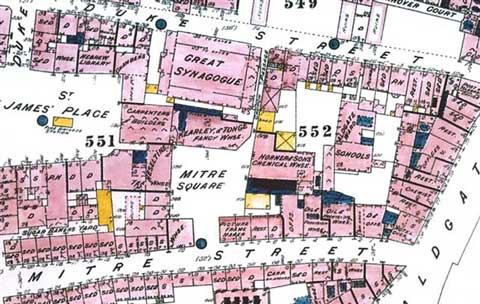
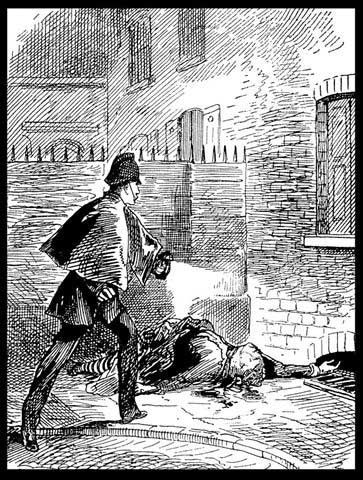

Ripper's Corner (from JACK THE RIPPER: A NEW THEORY by William Stewart)

Catherine Eddowes
The third must-see was the Black Museum at Scotland Yard. When young Slade knocked on the door, the Yard still looked like this:
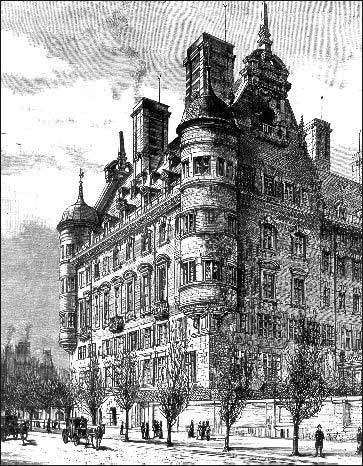
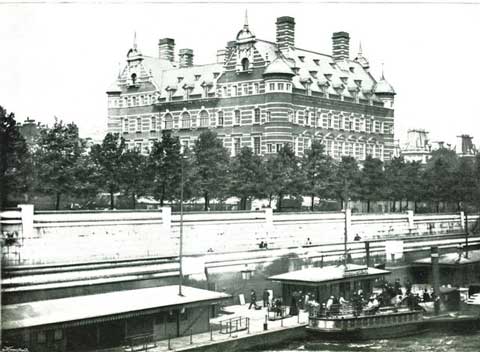

Slade's yearning to see the Black Museum was sparked by this:
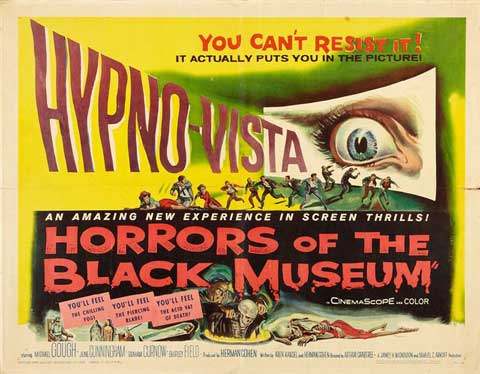
Released in 1959
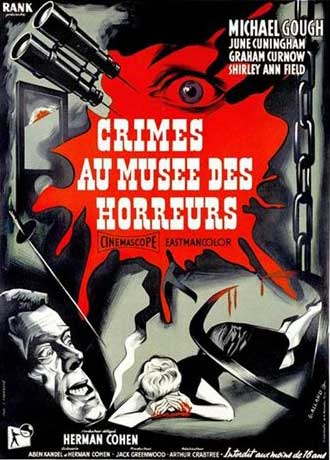
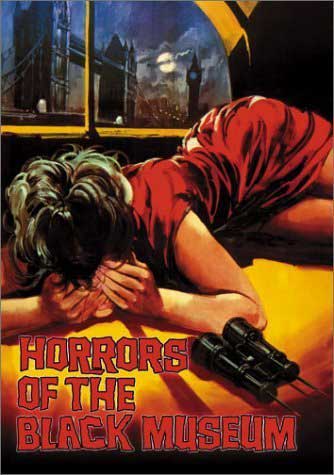
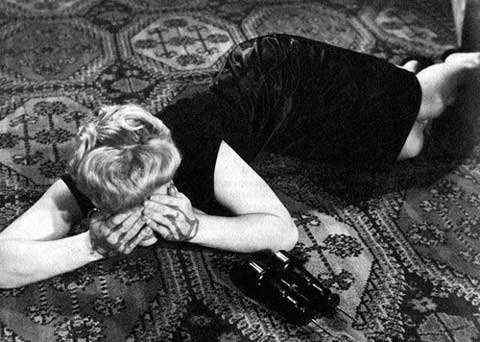
The Black Museum at Scotland Yard (now the Crime Museum) dates from 1874. It collects grisly artifacts from the Yard's macabre cases. That's where Herman Cohen found inspiration for his film: "The murder with the binoculars happened in the thirties, in Kent, which is outside of London. A young stable boy who was very much in love with his master's daughter was fired for having sex with her in the stables. And she would have nothing to do with him after that. When the Royal Ascot meet started the following year, she received through the mail a pair of binoculars, mailed from the Paddington Post Office. She took them to the window, she focused them, and the needles penetrated through her eyes and killed her. The stable boy was found, was tried, and was hung. And those binoculars are in the Black Museum in Scotland Yard." John Dickson Carr, the master of locked room puzzles and impossible crimes (see CRUCIFIED), used the spiked binoculars in two short stories: "TERROR'S DARK TOWER" (1935) and "THE WRONG PROBLEM" (1936). Having seen the movie and read the stories, Slade was itching to tour the Black Museum.
Uh-uh.
The Black Museum holds one of the world's most inaccessible collections. Except for British cops and rare visits from ghoulish-minded celebrities like Sir Authur Conan Doyle and Harry Houdini, it's off limits to the public. As Slade got the bum's rush out the door, he was told, "If you were J. Edgar Hoover himself, you wouldn't get in."
What a bummer.
There's always a way, as Carr fans know, to get into a locked room. Slade and his mom were invited by his dad's relatives for Easter dinner. When asked what he thought of London, he raved about everything except Scotland Yard. That's when he learned that his father's cousin's husband's father was high up in Special Branch. With enough notice before his next trip, access could be arranged.
The summer of 1967 was Slade's grand tour of Europe. Backpacking and hitchhiking on a couple of dollars a day. The highlight was a Cold War trek behind the Iron Curtain to Moscow. When the exit train from Leningrad reached Helsinki, Slade wrote a letter to London. Two months later, he was ushered into the Black Museum.
There, he saw this letter from Jack the Ripper:
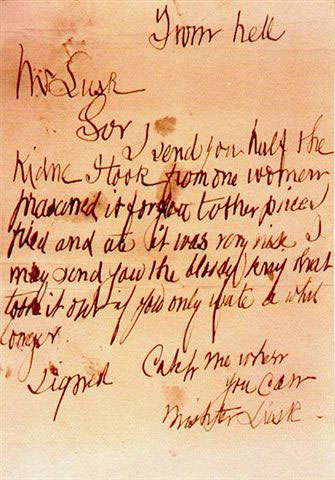
And Olive Durand-Deacon's gallstones, which sent John George Haigh - the Vampire Killer - to the gallows in 1949. Haigh thought he had completely dissolved her body in a drum of sulphuric acid.
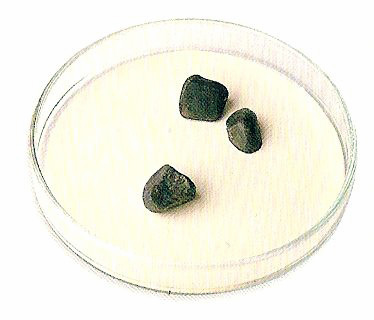
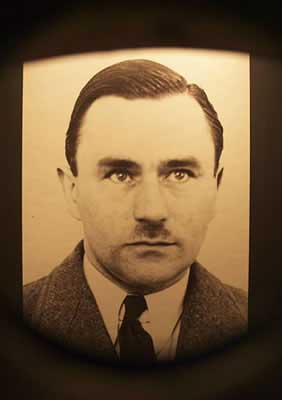
Haigh
And the riding crop that saw Neville Heath hanged in 1946. It had whipped a distinctive pattern into his victims' skin.
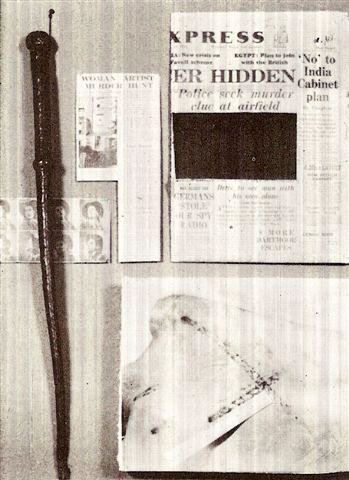
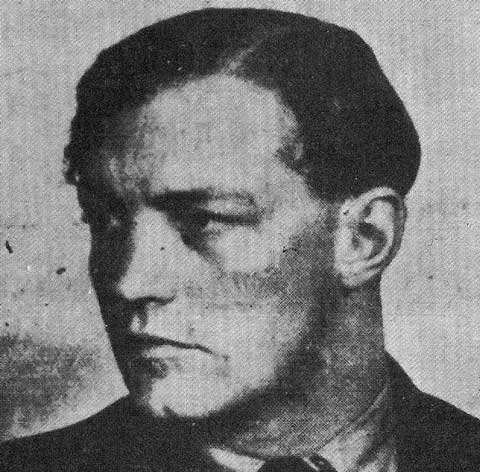
Heath
And the tobacco tin with pubic hair fetishes that John Reginald Halliday Christie kept as trophies from the women he killed then raped at 10 Rillington Place. The necrophiliac was hanged in 1953.
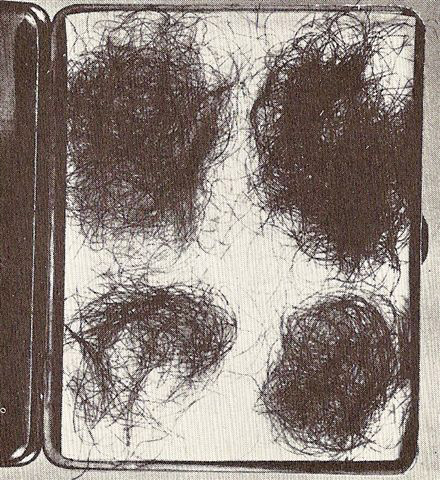
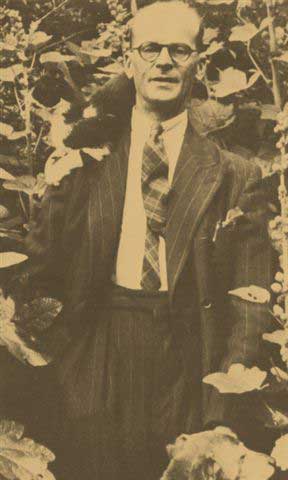
Christie
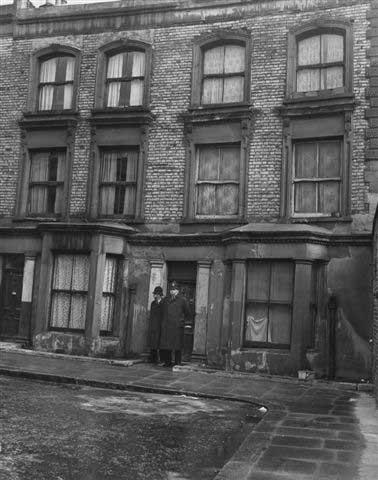
10 Rillington Place
And the noosed ropes used to hang infamous murderers collared by the Yard. See the labels?
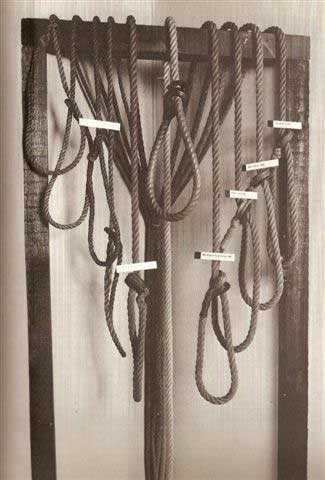
In the years since Slade's tour, the Black Museum has gathered more ingenious killing devices. Here's the briefcase designed for the Kray twins - London's notorious East End gangsters of the 1950s and 60s - to fire a poisoned dart into a witness on the steps of the Old Bailey courthouse. It's reminiscent of James Bond's case in FROM RUSSIA WITH LOVE.
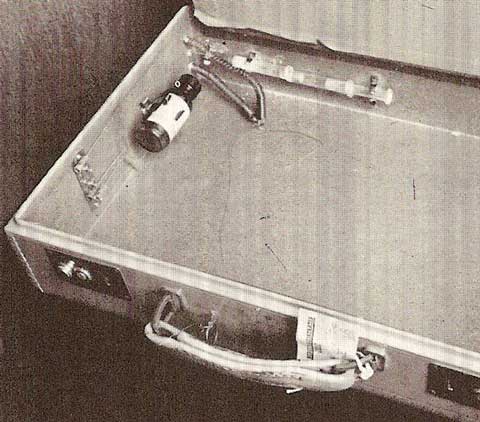
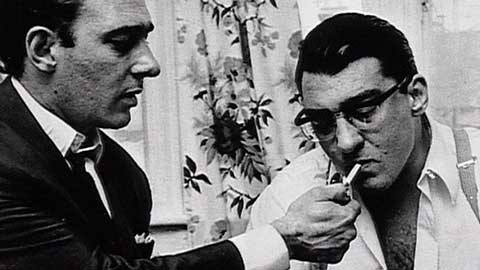
Kray twins, Ronald and Reginald
And the tiny pellet filled with ricin poison and fired from a KGB umbrella gun into the thigh of Bulgarian dissident Georgi Markov at a bus stop by London's Waterloo Bridge in 1978. The umbrella features in RED SNOW.
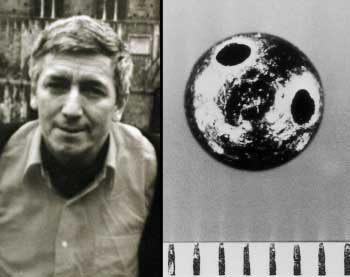
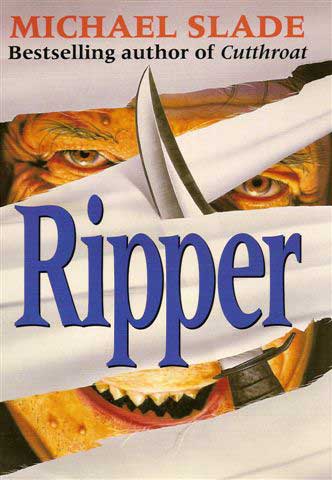
British edition of RIPPER
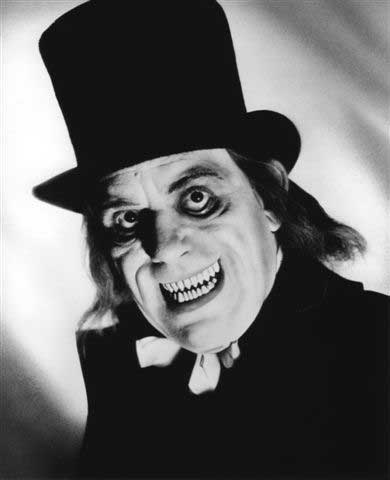
Lon Chaney, Sr., in LONDON AFTER MIDNIGHT (1927), a lost silent film. In 1928, a man was tried for murdering a woman in Hyde Park. His defense? Chaney's performance in the film drove him temporarily insane.
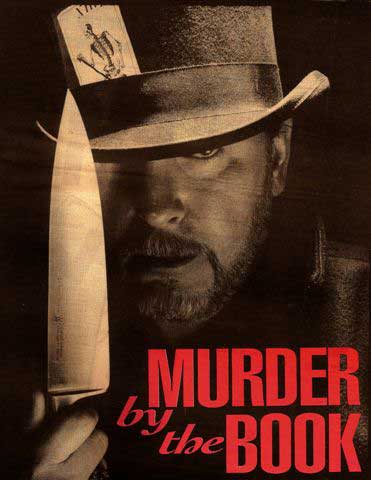
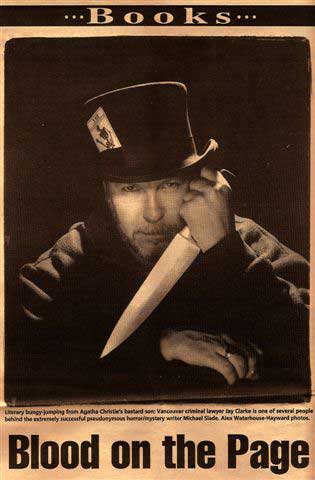
Michael Slade as Jack the Ripper in THE GEORGIA STRAIGHT, photos by Alex Waterhouse-Hayward
RIPPER - Slade's fourth novel - grew out of his teenage trip to London, reinforced and expanded upon by subsequent visits.
Ripperologists agree upon five "canonical" victims:
1/ Mary Ann (Polly) Nichols, in Buck's Row, on August 31, 1888.
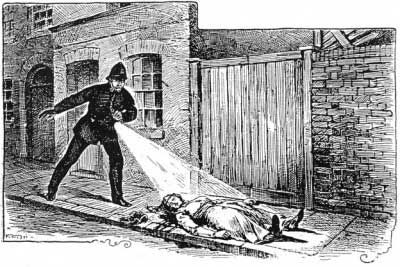
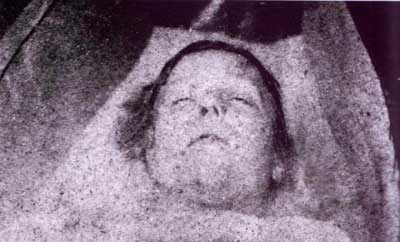 <
<Nichols
2/ Annie Chapman, in the back yard of 27 Hanbury Street, on September 8, 1888.
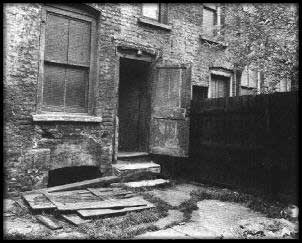 <
<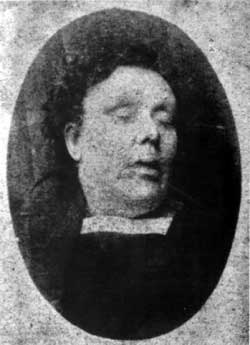 <
<Chapman
3/ Elizabeth (Liz) Stride, in Dutfield's Yard, on September 30, 1888.
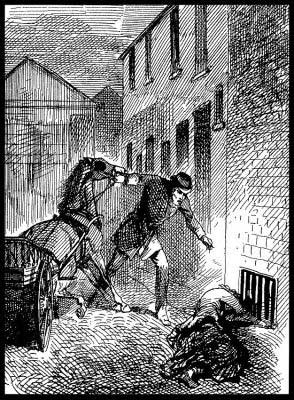 <
<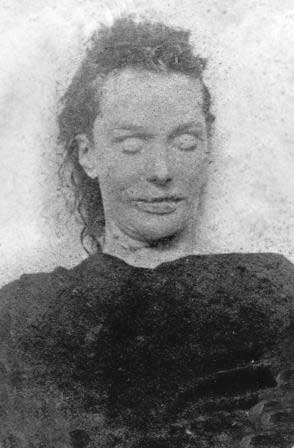 <
<Stride
4/ Catherine Eddowes, in Mitre Square, on September 30, 1888, the night of the "Double Event."

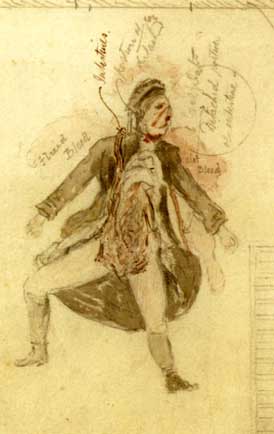
Police sketch of Eddowes
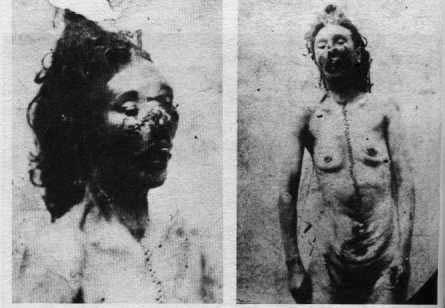
Eddowes
5/ Mary Jane Kelly, at 13 Miller's Court, on November 9, 1888.

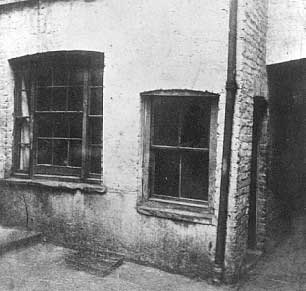
13 Miller's Court
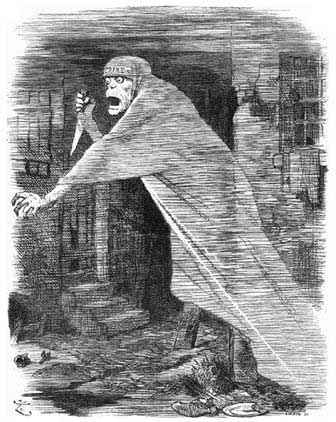
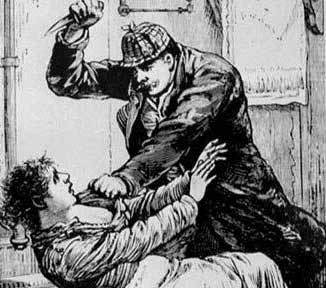
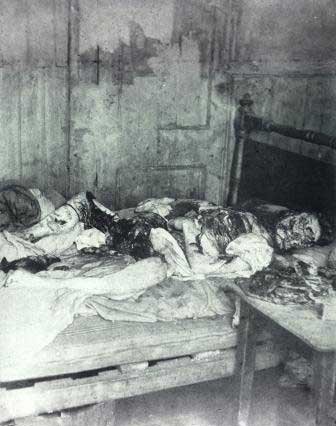
Kelly in her room in Miller's Court
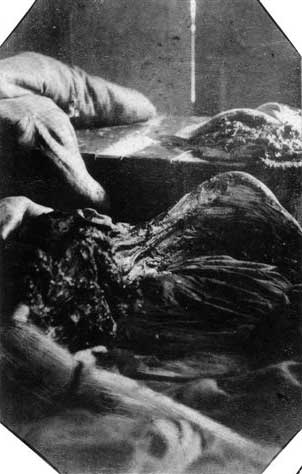
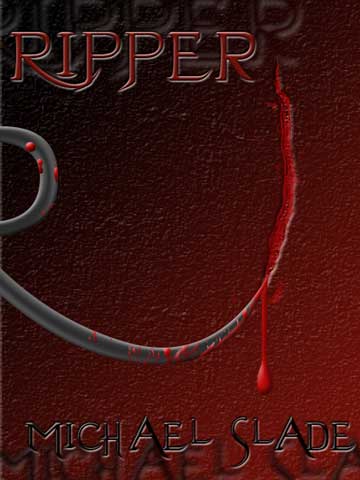
The identity of Jack the Ripper is history's most baffling whodunit. Every year seems to add another suspect to the list. For the purpose of plotting RIPPER, one suspect stood out from the rest. Why? Because he offered a credible link that would tie the 1888 Whitechapel murders to present day Vancouver. That suspect is Robert D'Onston Stephenson, also known as Tautriadelta.
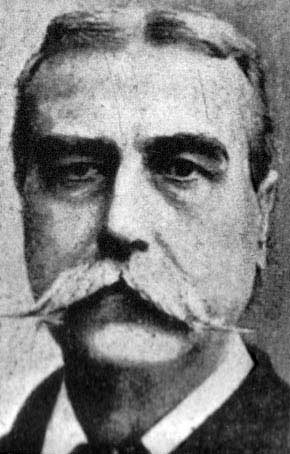
Stephenson
1880s London was a hotbed of black magic. Secret societies and satanists were obsessed with the occult. Of primary influence was Eliphas Levi (1810 - 1875). His 1855 manual DOGME ET RITUEL DE LA HAUTE MAGIE declared that tarot cards hold the key to the out-of-body experience of "astral projection." By ritualizing symbols hidden in the tarot, a black magician can leave his physical body and travel as an astral double to the astral plane, populated by spirits, angels, and demons. Magic he works in the occult realm will affect reality back on earth.
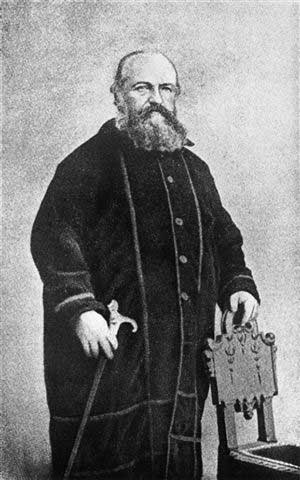
Levi
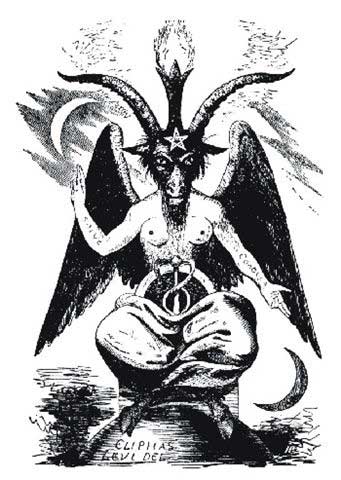
Illustration in Levi's DOGME ET RITUEL DE LA HAUTE MAGIE
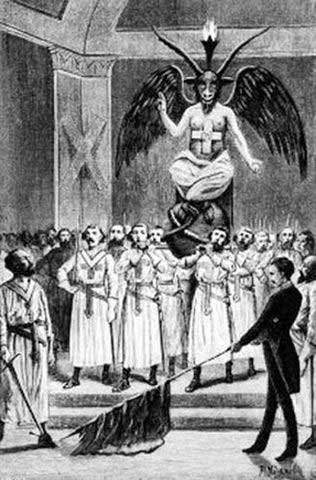
Satanic secret society
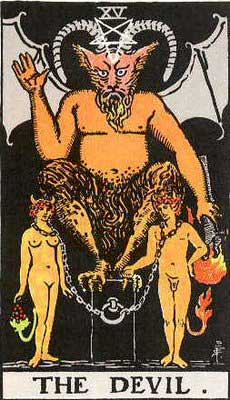
The Devil tarot card (note the pentagram between the horns)
A pentagram is formed from three triangles. Levi was the first to say that a pentagram with one point up represents "good," and a pentagram with one point down - as in the Devil card - represents "evil." He advanced this pentagram as the magical formula of human beings:
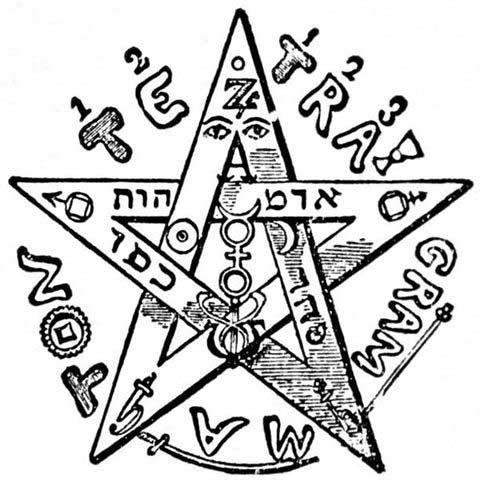
Because it reveals the secret through which a black magician can conjure a Great Occult Event, the Hanged Man is the most important tarot card. It symbolizes sacrifice to obtain prophetic power. But sacrifice of what? And sacrifice how? For the tarot to precipitate a Great Occult Event, the necromancer must ritualize its symbols properly.
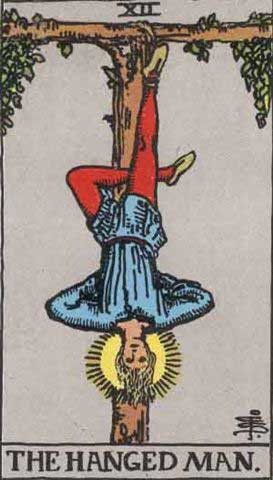
The Hanged Man tarot card (do you see hidden symbols?)
From an early age, Stephenson practiced black magic. He hoped that projecting his astral double - his Doppelganger - would make him "an instrument of the Gods." He studied medicine in Paris, then met an occultist who knew Eliphas Levi. While standing in a pentagram chalked on the floor, that black magician inducted him into the Hermetic Lodge of Alexandria, a gateway to the forbidden arts. In the year of the Ripper, Stephenson lived in Whitechapel, was addicted to drink and drugs, and under his occult name Tautriadelta - "Cross-Three-Triangles" - wrote for LUCIFER, an occult magazine.
In the Hanged Man tarot card, you'll find an inverted cross; the occult symbol for women, reversed; and the upside down single point of a pentagram triangle:
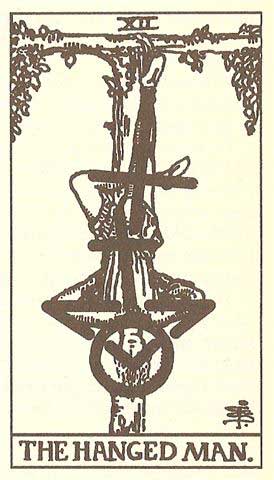
"In Eliphas Levi's DOGME ET RITUEL DE LA HAUTE MAGIE," Tautriadelta wrote, "we find the most elaborate directions for working magic spells. Black magic employs the agencies of evil spirits and demons. It is in the list of substances prescribed for evocation that we find the links which join necromancy with the quest of the East End murderer. These substances can only be obtained by murder and mutilation. Among them are strips of the skin of a suicide, nails from a murderer's gallows, candles made from human fat, and a preparation made from a certain portion of the body of a harlot.
"In the practice of evocation, the sacrifice of human victims is a necessary part of the process, as is the profanation of the cross. In this connection, it is well to remember one of the most extraordinary and unparalleled circumstances in the commission of the Whitechapel murders, and a thing which could not by any possibility have been brought about fortuitously. Leaving out the last murder, committed indoors, we find that the sites of the murders form a perfect cross."
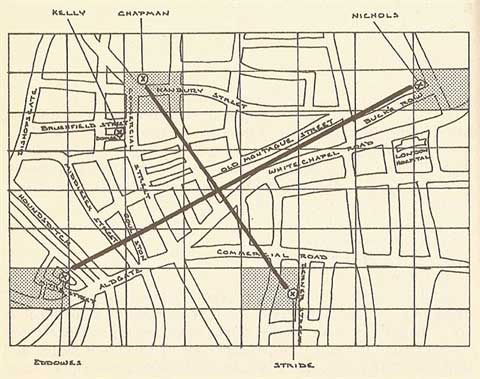
To assess the statistical probability of Tautriadelta's insight, consider this. Overlay an East End map of the Ripper's murder sites with a 64-square chessboard grid. The chance of Nichols being killed in her square is 1 in 64; of Chapman in her square, 1 in 63; of Stride in her square, 1 in 62; and of Eddowes in her square, 1 in 61. Therefore, the odds of the Ripper's cross forming randomly - given the state of geographic profiling in 1888 - are 1 x 1 x 1 x 1 over 64 x 63 x 62 x 61 = 1 in 15,249,024.
Three of the Ripper's victims had missing organs. Chapman, her uterus. Eddowes, her kidney and uterus. And Kelly, her heart. Does that match Tautriadelta's comment about black magic requiring "a preparation made from a certain portion of the body of a harlot?"
Do the first four Ripper victims form the tau cross hidden in the Hanged Man tarot card and Tautriadelta's name? Does the occult symbol for women represent the kind of sacrifice required by that card? Do the multiple slashes that ripped Kelly apart in her room at 13 Miller's Court contain the three triangles of the upside down pentagram in the Hanged Man and the Devil tarot cards, and Tautriadelta's name? In other words, was Jack the Ripper a black magician ritualizing the symbols in the Hanged Man tarot card to conjure a Great Occult Event? And because black magic works best in a magical place, is that why Stephenson chose 13 Miller's Court - 13 being a magical number in the satanic occult - as the place where he'd become "an instrument of the Gods?"
That was more than enough to inspire Slade's RIPPER. The story, however, gets better.
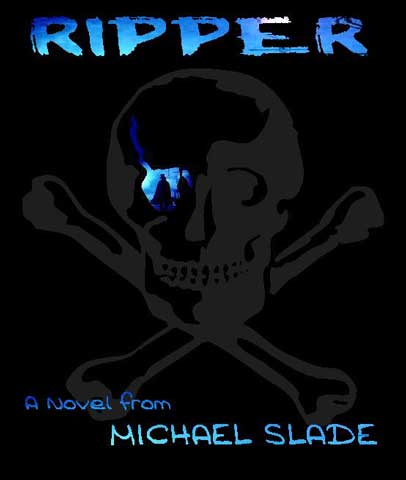
The occult's most famous secret society was the Hermetic Order of the Golden Dawn. Founded in the year of the Ripper and strongly influenced by Eliphas Levi, the Golden Dawn embraced tarot divination and astral travel. Its members included A.E. Waite, who translated Levi's manual into English as TRANSCENDENTAL MAGIC, ITS DOCTRINE AND RITUAL, and who designed the above tarot cards; Bram Stoker, the author of DRACULA; Algernon Blackwood and Arthur Machen, who penned classic horror tales; and the notorious Beast 666, Aleister Crowley.
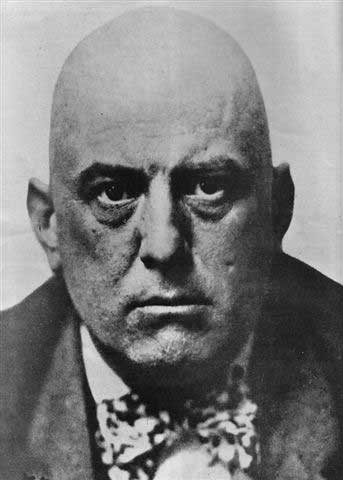
Crowley

Young Crowley
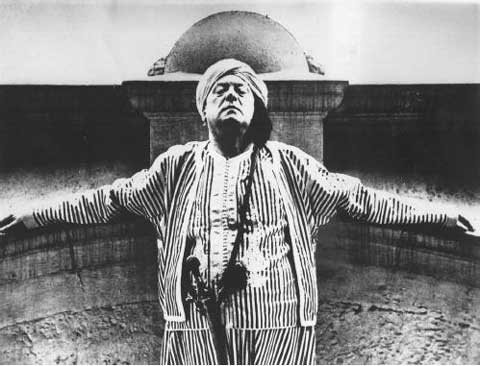
Older Crowley
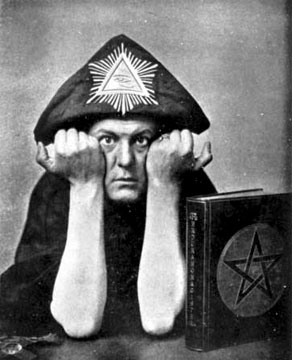
Crowley with pentagram
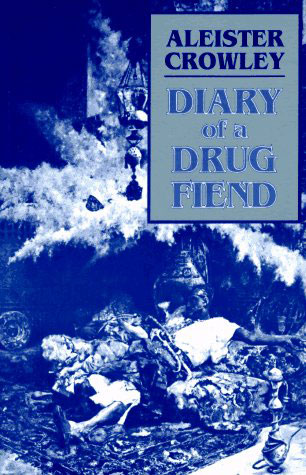
Aleister Crowley (1875 - 1947) lived a life of sex orgies, drugs, and satanism. His mother called him "Beast 666" because she thought him possessed by the Devil. Newspapers called him "the wickedest man in the world." In charging a jury in a 1934 case involving Crowley, Mr. Justice Swift commented: "I have been over forty years engaged in the administration of the law in one capacity or another. I thought that I knew of every conceivable form of wickedness. I thought that everything which was vicious and bad had been produced at one time or another before me. I have learnt in this case that we can always learn something more if we live long enough. I have never heard such dreadful, horrible, blasphemous, and abominable stuff as that which has been produced by Crowley."
After the Golden Dawn, Crowley formed his own cult. He employed Victoria Cremers, who around the time of the Ripper had lived in a threesome with Mabel Collins and Tautriadelta. She told Crowley about picking a locked trunk that Stephenson kept under his bed, and what she saw inside. In 1920, Crowley founded the Abbey of Thelma in Italy. There, amid drug debauchery and blood sacrifices in his Chamber of Nightmares, Crowley confided, "I knew Jack the Ripper. He was a magician, and his crimes were the outcome of his Magick studies." Crowley was then in possession of Stephenson's trunk, which contained five bloodstained gentleman's ties. After a cultist named Raoul Loveday died from drinking blood, Mussolini expelled Crowley's cult from Italy.
Somehow, the Ripper's trunk disappeared.
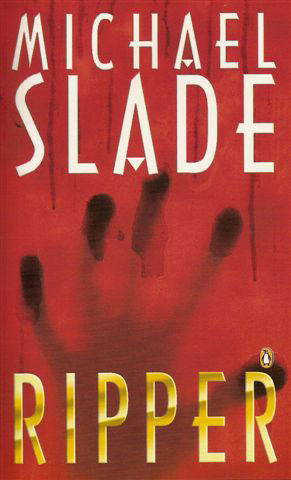
Canadian edition of RIPPER
Jack the Ripper is dead, right? Don't bet your life on it! Who would slash the body to shreds, then rip the face off America's foremost feminist - and hang her out to die? Who would take a pair of twin hookers on a terror trip that made death seem innocent and sweet? Who would turn a secluded island gathering of bright and beautiful people into a carnival of carnage? What grim and grisly figure stood, dripping knife in hand, at the end of the most horrifying trail of death and deception detectives Robert DeClercq and Zinc Chandler ever followed? A lot of people were dying to find out...
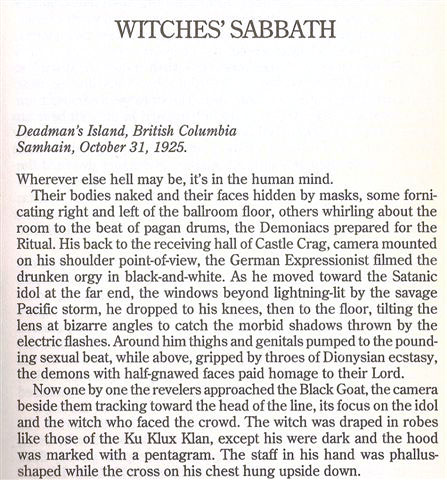
"Michael Slade is at his peak with RIPPER, a schizophrenic thriller that straddles the horror/crime divide. On one side, a pair of lunatics commit witchcraft murders, arranging their victims in a grand design that continues Jack the Ripper's work a century later. On the other, a writers' convention becomes a whodunit complete with locked rooms and self-triggering death devices. Each page entertains with criminal and occult research. Highly enjoyable." - Time Out (London)
"Literary bungee-jumping with Agatha Christie's bastard son. Slade has created a unique hybrid of horror and mystery. His gory but brilliant books are the sort that keep you turning pages until 3 a.m. and then leave you sleepless with nightmares. As violent and grotesque as these stories are, you can't resist them. Slade's writing is strong and visceral, but the real hook is his plots. Slade's books hark back to the Golden Age of Detective Fiction in that his clever plots are old-fashioned whodunits, but with an adrenaline rush. You can't talk about Slade's novels without mentioning the truly horrific images that decorate his landscape. In the graphic way the murders are described, and in developing the motives behind them, he taps into his audience's most primal fears." - The Georgia Straight (Canada)
"A killer of a book. It really is frightening, with a sly mystery behind the killings, the dramatic chase, the gory parts, and the intensity of the Satanic rituals. RIPPER is a blood-thirsty thriller. Welcome to Deadman's Island!" - Trauma
"Brilliant police procedurals. Intense enough to require seatbelts." - Quill & Quire
"A pair of egomaniacal killers plan to follow the diabolical footsteps of Jack the Ripper in this stunning thriller. Slade pulls out all the stops with this petrifying, blood-drenched yarn which builds up to a climax almost too frantically gripping for words." - The Northern Echo (Britain)
"Highly intriguing! A historical mystery combined with a contemporary serial killer tale that is a great read." - The Bookseller (London)
The late 1960s and early 1970s saw an explosive revival of interest in the occult and satanism. Sex, drugs, and rock & roll. In 1966, Anton LaVey established the Church of Satan. In 1967, the Beatles included a picture of Aleister Crowley on the album jacket of SGT. PEPPER'S LONELY HEARTS CLUB BAND, and the Rolling Stones released THEIR SATANIC MAJESTY'S REQUEST. In 1969, the Stones performed "SYMPATHY FOR THE DEVIL" at the Altamont festival, where a Hell's Angels security biker killed a participant. In 1970, Black Sabbath released their debut album. Jimmy Page of Led Zeppelin, a Crowley fan, bought Beast 666's castle. In print and at the movies, ROSEMARY'S BABY and THE EXORCIST became box office blockbusters surfing that satanic wave.
"Golfed" is criminal lawyers' slang for a trial that lands in your lap at the last moment. In the early 1970s, a lawyer with a trial set "peremptorily" - that means it must go ahead - golfed the case to Slade when he came down with the flu. The charge was common assault, and the facts seemed run-of-the-mill. The accused rented a basement suite. Descending the staircase unannounced from his home above, the landlord entered the premises and got punched in the nose. Unfortunately, the case had also been golfed around the prosecutors' office, where no one had fully interviewed the landlord. When that witness gave evidence, Crown counsel asked him, "Why did you go down the stairs?" The landlord replied, "To see what the hell was going on in my cellar." Whereupon, he whipped out some snapshots and tossed them on the counsel table. The photos showed a pentagram scrawled in blood on the floor, complete with skulls, black candles, and a bloodstained altar. Suddenly, that run-of-the-mill case veered into issues of cruelty to animals and freedom of religion. That's why a "golfed" file should always come with a shout of "Fore!" And no doubt explains why Slade, to this day, finds himself unable to embrace the fairway rituals of that devilish game.
When HEADHUNTER was published in 1984, the first person to praise Slade's debut was Robert Bloch, the author of PSYCHO (see GHOUL). Bloch's best-known short story, "YOURS TRULY, JACK THE RIPPER", appeared in the July 1943 issue of WEIRD TALES. His Ripper is a black magician whose murders are ritual sacrifices to the dark gods who keep him eternally young.
In plotting RIPPER, Slade turned that premise inside out. What if - instead of conjuring his Great Occult Event - Jack the Ripper failed because he got the ritual wrong? True, he correctly interpreted the symbols hidden in the Hanged Man tarot card, but he neglected to hang the four sacrifices that sign the Ripper's cross.
The same way every murder begins with the motive of the killer(s), every Slade plot grows out of the psychology of the psycho(s). If copy cat modern black magicians sought to correct the ritual error made by Jack the Ripper, what would be the psychology driving that killing team? Slade found his answer here:
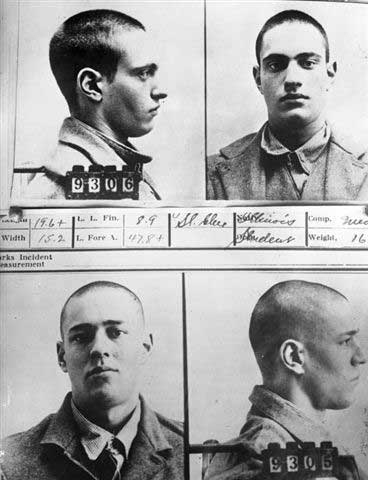
Leopold and Loeb
(Deutsches Bundesarchiv, licensed copyright)
Nathan Leopold, Jr. (19) and Richard Loeb (18) were wealthy University of Chicago students who, simply for the thrill of it, killed 14-year-old Bobby Franks in 1924. Leopold reportedly had an IQ of 200. The pair believed themselves to be Nietzschean supermen. Before committing their "perfect crime," Leopold wrote to Loeb: "A superman is, on account of certain superior qualities inherent in him, exempted from the ordinary laws which govern men. He is not liable for anything he may do." (Note: Aleister Crowley's motto was "Do what thou wilt shall be the whole of the Law.")
After kidnapping the boy, the would-be supermen struck him with a chisel, stuffed a sock in his mouth, then poured hydrochloric acid on the body to hinder identification. As luck would have it, Leopold unwittingly dropped his pair of almost unique eyeglasses near their victim.
In the "Trial of the Century," Leopold and Loeb were defended by Clarence Darrow, America's iconic lawyer (see CUTTHROAT). Darrow saved both from the death penalty, and they were imprisoned for life. In 1936, Loeb was slashed to death with a razor in the prison's shower. After serving 33 years, Leopold was paroled in 1958.
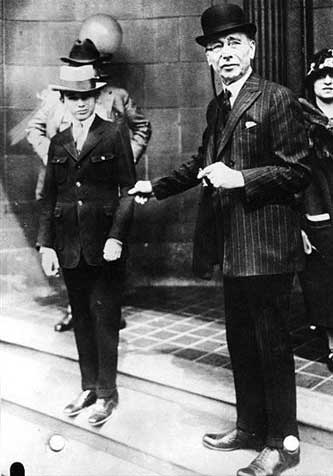
Bobby Franks and his father
(Deutsches Bundesarchiv, licensed copyright)
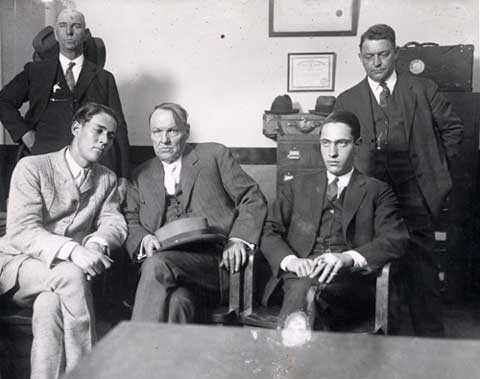
Clarence Darrow between Loeb and Leopold
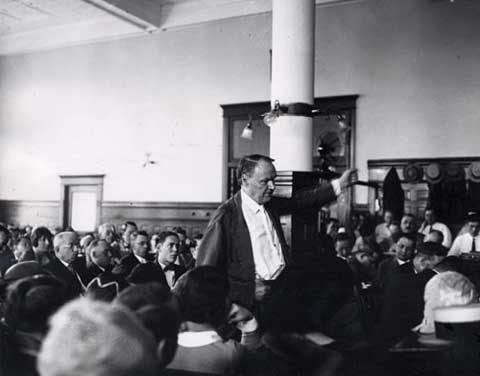
Darrow defending Leopold and Loeb in court
The criminal courts are full of violence against women. As evident from the crimes above in the Black Museum, warped male sexuality is nitroglycerin. Second-wave feminism exploded in the same period as the revival of obsessive interest in the occult and satanism. In one case, a leading feminist raised a son who grew up to become a serial rapist. Overhearing constant male-bashing had engendered a seething rage in him. As every criminal lawyer knows, Newton's Third Law - "For every action there is an equal and opposite reaction" - isn't confined to physics. And sometime the reaction goes off the Richter scale.
"Skull" and "Crossbones" - the occult names of RIPPER's supermen - hang their first Ripper's cross victim, the radical feminist mother of one of the satanic killers - from Lynn Canyon Suspension Bridge.
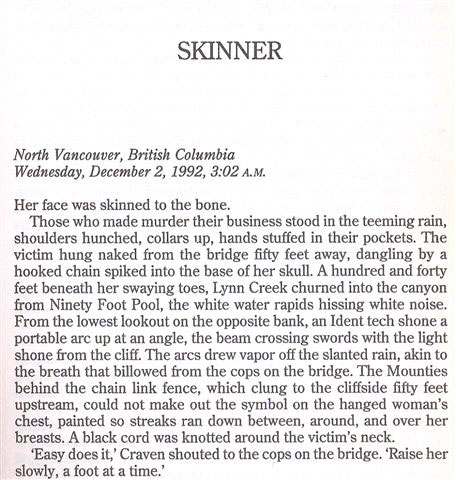
Before RIPPER was published in 1994, the CBC (Canadian Broadcasting Corporation) filmed a documentary on Slade for its long-running news series, THE FIFTH ESTATE. The director wished to shoot the above scene on the suspension bridge, so the props department obtained the "body double" of a world famous actress for the hanging. It's for you to solve her identity. Slade won't tell.
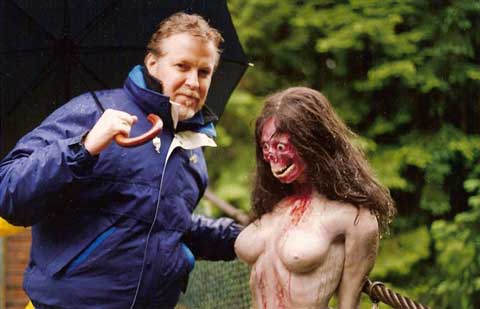
Slade and RIPPER victim on the suspension bridge
Every writer gets bad reviews. H.G. Wells was ripped from one shore of Britain to another for THE ISLAND OF DR. MOREAU. Hemingway got dismissed as "an overgrown Boy Scout." As President Truman said, "If you can't stand the heat, get out of the kitchen." All most writers can do is grin and bear it.
But not Skull & Crossbones. They're supermen.
Just as Jack the Ripper taunted Scotland Yard with his letters and part of a human kidney, so the killers in RIPPER taunt the Mounted Police. They write a novel called JOLLY ROGER, in which they offer the Mounties (and the reader) hidden clues that will solve their upcoming murder spree. Unfortunately, the book gets a bad review. Not only did that give Slade the means to characterize the pair as Nietzschean monters, but also the opportunity to have a little fun with PUBLISHERS WEEKLY. Question: How would PW react?
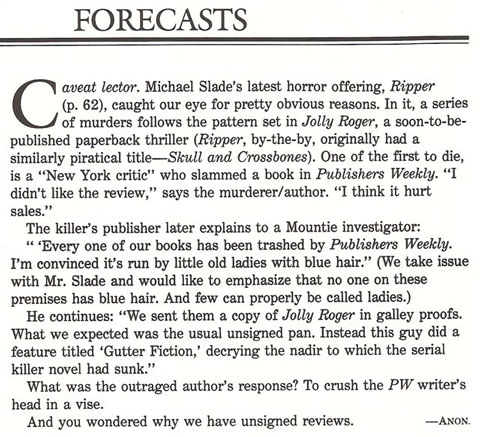
Incidentally, PW gave RIPPER a thoughtful review, calling it "a classic murder mystery game" in which Slade includes "trenchant insights into the way childhood sexual abuse and fantasy inform the development of psychopathic killers."
The best isolation thriller of all is undoubtedly Agatha Christie's brilliant AND THEN THERE WERE NONE (1939). With over 100 million copies sold, it's the world's best-selling mystery and the 7th most popular book of all time. Ten people are tricked into coming to an escape-proof island, where they are murdered one by one in grotesque ways that parallel the nursery rhyme "TEN LITTLE INDIANS."
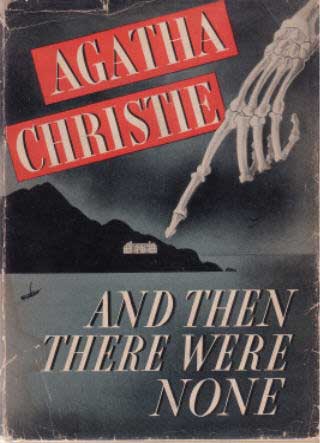
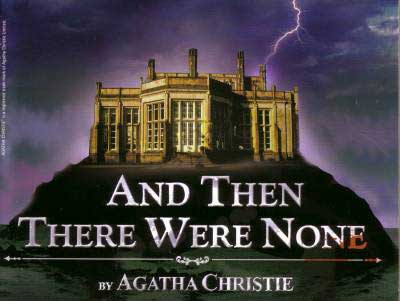
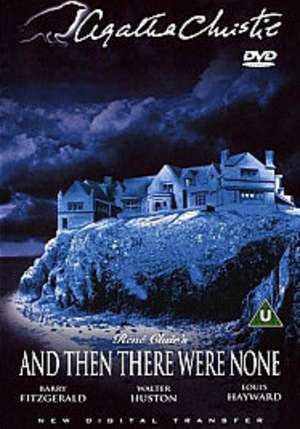
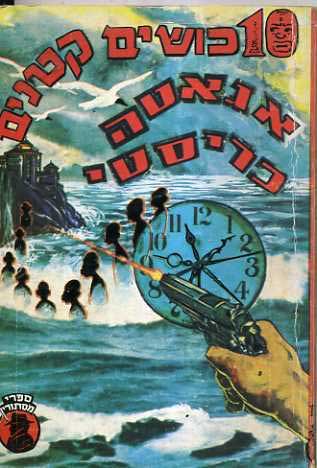
A bizarre cover that reflects the disused original title
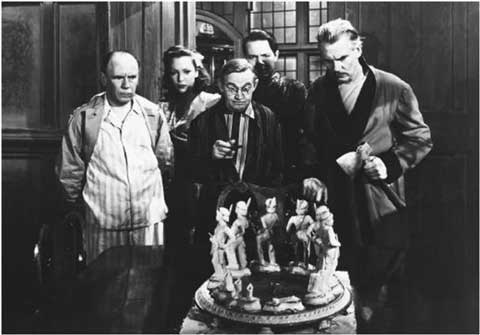
Countdown in the 1945 film
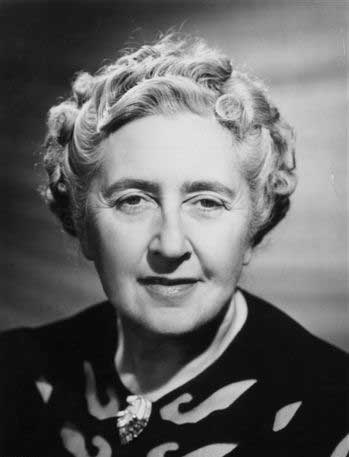
Agatha Christie
Was 13 Miller's Court too weak a magical place? Did that weakness, combined with misunderstanding the cross in the Hanged Man tarot card, doom Jack the Ripper's Great Occult Event to failure? Skull & Crossbones won't make the same mistake. That's why they have lured a gaggle of mystery writers to Castle Crag on Deadman's Island, where legend says a cult of satanists known as the Demoniacs conjured the Devil during a ritual in 1925. So, what makes Deadman's Island such a magical place?
In March 1778, Captain Cook became the first European to set foot on British Columbia soil when he landed at Yuquot (Friendly Cove) in Nootka Sound on Vancouver Island.

Onboard Cook's ship Resolution was an official artist, John Webber. He did these drawings onsite in 1778.
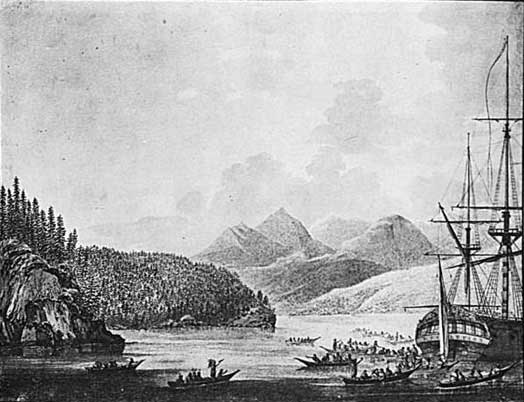
Resolution at anchor in Nootka Sound
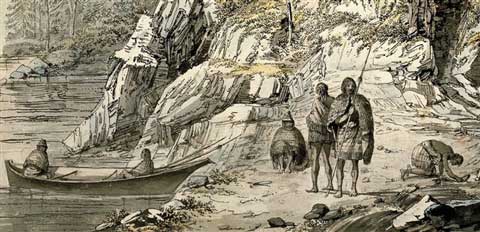
Ashore at Nootka Sound
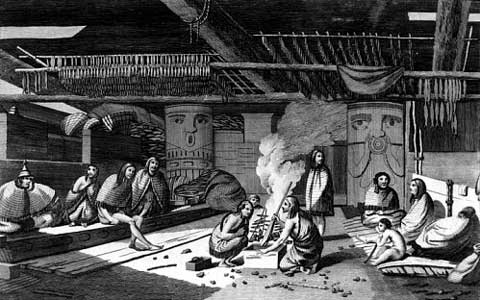
Inside longhouse (National Archives of Canada)
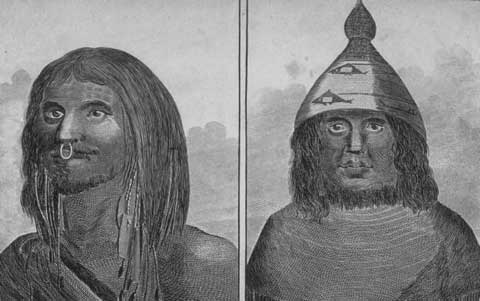
Nuu-chah-nulth (Nootka) people
What Captain Cook did not see - because it was too sacred - was the Nootka Whalers' Washing House. Hunting whales was a dangerous job that required the aid of magic, so Nuu-chah-nulth shamans built the shrine at Yuquot over 300 years ago. The Washing House drew its magic from corpses and ritual sacrifice. To intensify its power, carved wooden idols and cedar whales were added. In 1904, the Nootka shrine was dismantled and spirited away in the night to gather dust in the storage cellar of a museum.

See the human skulls?
Deadman's Island hugs the shore of Stanley Park in Vancouver's harbor. That name's too good not to use, so Slade moved the island to the Pacific offshore from Yuquot, and reassembled the Washing House in a blowhole cave wormed into its bedrock. Castle Crag, which crowns the island, is a combination of Craigdarroch Castle and Hatley Park in Victoria. By killing the writers off one by one until there are none left alive, Skull & Crossbones will stock the magical cave with corpses to power their Great Occult Event.
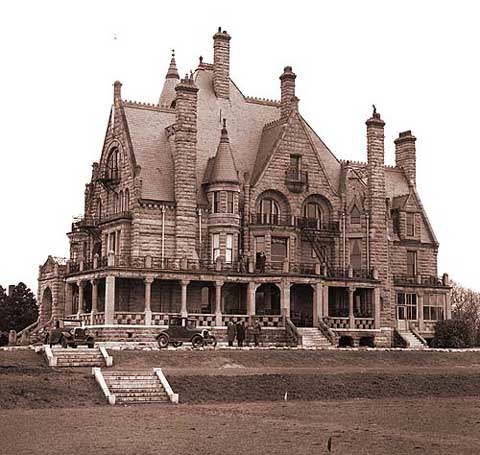
Craigdarroch Castle
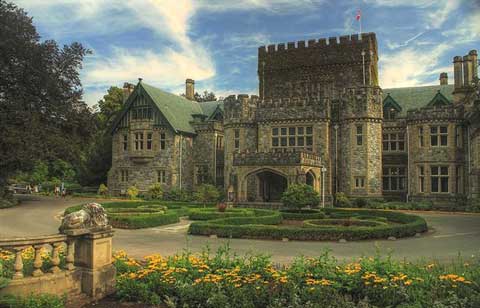
Hatley Park (photo by Brandon Godfrey, licensed copyright)
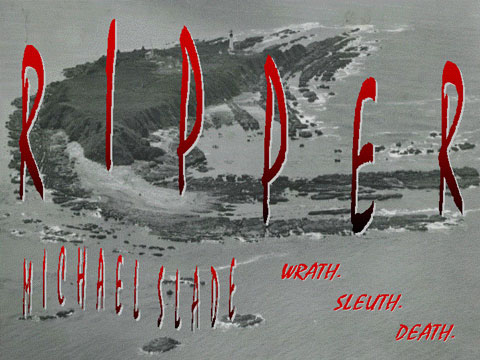
Every Slade thriller is a fusion of mystery subgenres: "softboiled" sleight-of-hand puzzles; "hardboiled" warped psychology spawning horrific murders; and police procedure. But none more than RIPPER. You've played the game of CLUE, right? Colonel Mustard did it with the wrench in the library. Well, here's the ground floor of Castle Crag:
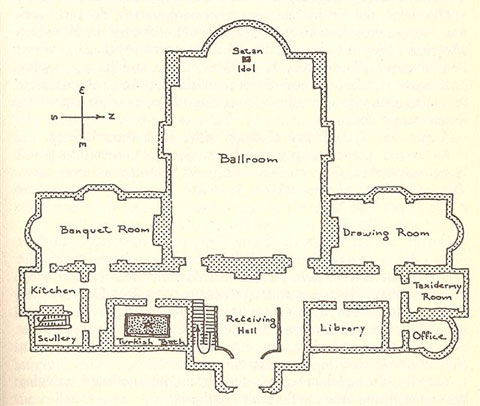
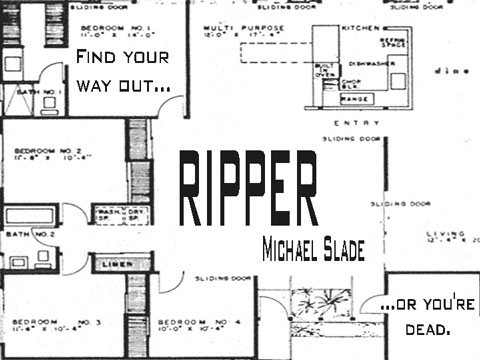
Inspired by the killing devices in Scotland Yard's Black Museum, Slade - through Skull & Crossbones - has booby-trapped the mansion. The reader has whodunits, howdunits, locked room puzzles, and a dying message to solve. "God's toilet" exists in fact off the coast of Manuel Antonio National Park in Costa Rica. The sucking death actually happened on an airplane, and later in a swimming pool. The hogger is adapted from a grisly accident that occurred in a local sawmill. The hollow machine is used to shred waste wood. While the mill workers were at lunch, a youth was told to climb down and clean the inside. Unaware, the returning workers flicked the on-switch. In a burst of red mist, the whirling hogger blades turned the youth into a milkshake.
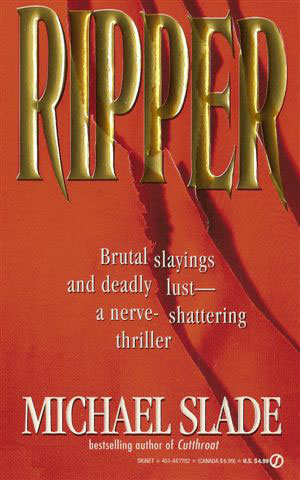
American edition of RIPPER
"Slade knows psychos inside out. His novels are horror-whodunits because they revolve around a detective storyline: a macabre Miss Marple, if you will." - The Toronto Star
"Step onto a trail of terror, because JACK'S BACK. Slade takes a look at the Ripper myth in a very different way. This is a book with extra dimensions, and there's much to be admired in the detailed, carefully crafted, and convoluted plot. There's even more to be admired in the research that has gone into it. RIPPER is murder most horrid." - Evening Gazette (Britain)
"Slade has some pretty wild dreams, judging by the kind of twisted tales he comes up with. In RIPPER, he's woven even more intrigue into his intricate plots." - National (The Canadian Bar Association)
"For Slade, the practice of law is a window onto the world of corruption, mystery, and the macabre that inspires the horrific plots that make his books so compelling. Slade has gained much of his insights through expertise in insanity pleas made in the courtroom, where he has represented dozens of accused killers. His books are not light reading. Ruthlessly violent killers are woven into complex plots that twist and turn, while Slade opens the killer's mind to give readers a shocking insight into the psyche of the insane." - Canadian Lawyer
"Deft, braintwister, whodunit plots. There is no safety for the reader in a Michael Slade book." - Vancouver Magazine
"Slade has quite an imagination and you get caught up in his nightmare. His pen catches your fears and reels them in. Brilliantly plotted, gripping, and powerfully told, you really feel like you're on a roller-coaster ride to hell." - Evening News (Britain)
"Toward a different kind of fiction. Purveyor of all things dark and evil, Slade keeps readers on the edge of their seats with a winning combination of mystery and horror." - North Shore News (Canada)
Shortly after RIPPER's publication, Slade received a letter dated November 20, 1994:
"I am writing to tell you how much I enjoyed reading RIPPER. You might be interested to know that analysis of crime site locations has now become an investigative strategy in certain types of serial violent crime cases. Geographic profiling is used to determine the most likely area for offender residence, and has been applied in investigations of serial murder, serial rape, and serial arson. In addition to the more subjective interpretation of the criminal's mental map, specialized computer software is used to calculate a three-dimensional probability surface, the height of which represents the likelihood that the offender resides in a given location. Various investigative stategies can then be developed based on such a geographic prioritization. It was most intriguing to read, in a work of fiction, about the use of spatial analysis in a serial murder investigation.
"Also, if you are not already aware, Skull and Crossbones share their particular philosophical bent with John Norman Collins, the 'Michigan Murderer.' A serial killer who preyed on coeds near the Eastern Michigan University, Collins was responsible for eight murders from 1967 to 1969. A senior student at EMU in Ypsilanti, Collins was fascinated by CRIME AND PUNISHMENT. He once wrote, in an English essay, 'It's not society's judgment that's important, but the individual's own choice of will and intellect.' This paraphrases what Dostoevsky's student murderer Raskolnikov believed: 'There are men...who have an absolute right to commit all kinds of wicked and criminal acts - men for whom, to a certain extent, laws do not exist.'"
The letter was signed "Kim Rossmo."
Within a year, Rossmo would revolutionize how psycho-hunters stalk serial predators.
So, the story continues in BURNT BONES.













